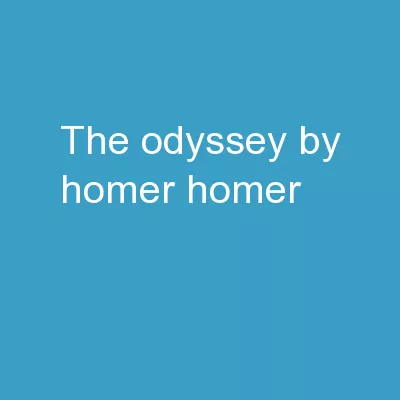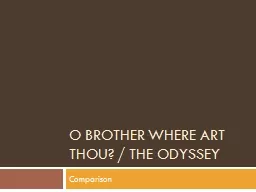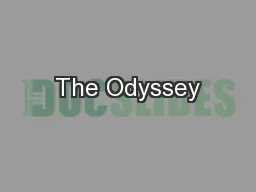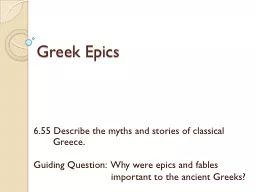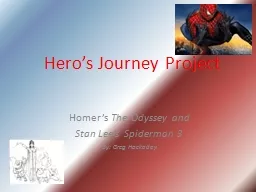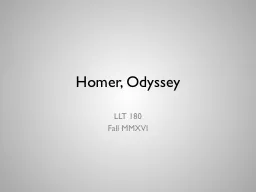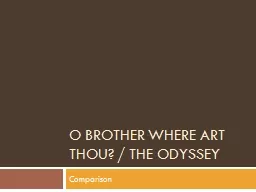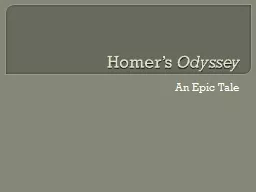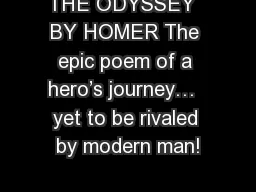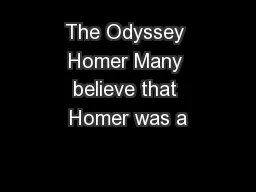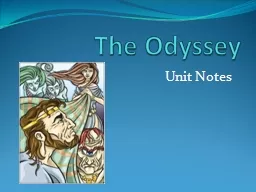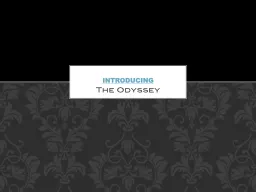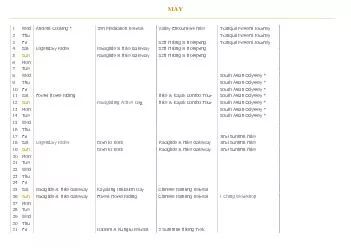PPT-The Odyssey By Homer Homer
Author : briana-ranney | Published Date : 2019-02-25
Many believe that Homer was a blind Greek poet who wandered from town to town chanting his poetry to the accompaniment of a lyre Some say that the lyrics were not
Presentation Embed Code
Download Presentation
Download Presentation The PPT/PDF document "The Odyssey By Homer Homer" is the property of its rightful owner. Permission is granted to download and print the materials on this website for personal, non-commercial use only, and to display it on your personal computer provided you do not modify the materials and that you retain all copyright notices contained in the materials. By downloading content from our website, you accept the terms of this agreement.
The Odyssey By Homer Homer: Transcript
Download Rules Of Document
"The Odyssey By Homer Homer"The content belongs to its owner. You may download and print it for personal use, without modification, and keep all copyright notices. By downloading, you agree to these terms.
Related Documents

